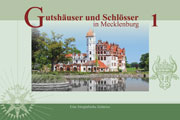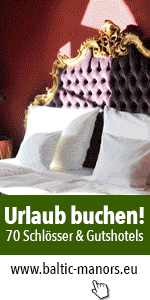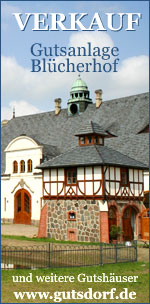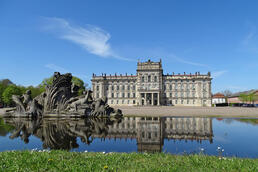Deutsche Website
Book "Manor houses and castles in Mecklenburg"

In Volume 1, we present 49 estates on 156 pages with short texts and more than 220 historical and current photographs.
Ludwigslust Castle
In 1724, a hunting lodge and park for Duke Christian Ludwig II of Mecklenburg-Schwerin were built in the village of Klenow. In 1754, the village was renamed Ludwigslust.
Two years later, it was decided that the ducal residence itself should relocate to Ludwigslust, and in 1764 the move was actually completed. The three-storey, sandstone-clad red brick palace we see today was constructed between 1772 and 1776 for Duke Friedrich of Mecklenburg-Schwerin and designed by Joann Joachim Busch. The floor plan is E-shaped, with the central block higher than the rest of the building. The roof parapet features 40 larger-than-life allegorical figures arranged between a series of ornamental vases. The first floor of the palace houses the richly decorated, two-storey, Rococo-style Gold Room, part of whose décor is made of papier mâché. A bronze statue of Grand Duke Friedrich Franz I guards the main entrance.
From the courtyard side, Schloss Ludwigslust looks onto a cascade-style stone fountain and the palace church, which was designed by Busch and constructed between 1765 and 1770.
In 1837, the ducal residence moved back to Schwerin. After the abdication of the Grand Duke in 1918, the palace was used as a home for his family. From 1945 onwards it accommodated various administrative offices. Schloss Ludwigslust today houses a museum and café which are open to the public.
The Ludwigslust Castle Landscape Park
Museum Schloss Ludwigslust
19288 Ludwigslust, Schlossfreiheit 1
Contact:
Gabi Karraß
Phone:
03874-571915
Fax:
03874-571919
Email:
infoSPAMFILTER@schloss-ludwigslust.de
Url: www.schloss-ludwigslust.de/en



